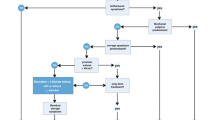Summary
Benign prostatic hyperplasia (BPH) is a common disorder in elderly men which carries a substantial economic burden. Urinary symptoms associated with moderate to severe disease can significantly interfere with daily activities and reduce quality of life. Obstruction of urine flow in men with BPH can result from nonmalignant enlargement of the prostate gland (static component of BPH) and from α1 receptor-mediated increased smooth muscle tone of the bladder neck and prostate (dynamic component of BPH). Transurethral resection of the prostate (TURP) is generally very effective and has traditionally been the standard treatment for men with moderate to severe BPH. However, response to therapy with TURP is not universal and the procedure is associated with a number of potential complications. Moreover, many men prefer to avoid or are not suitable candidates for this invasive procedure. Thus, there is an increasing role for less invasive treatment, including drug therapy, in men with moderate to severe BPH.
Terazosin is an α1 receptor antagonist which has been shown in placebo-controlled trials to significantly improve American Urology Association (AUA) symptom and quality-of-life scores and symptom problem index (‘bother’ score), as well as increase peak urinary flow rate, in men with BPH. In a recent large randomised US trial, treatment for I year with terazosin titrated to 10 mg/day improved mean AUA symptom score and peak urinary flow rate to a significantly greater extent than finasteride 5 mg/day in men with moderate to severe BPH.
The most frequently reported adverse events associated with terazosin include dizziness, asthenia, postural hypotension, somnolence, headache, peripheral oedema, nasal congestion/rhinitis and syncope. Approximately 5% of men with BPH discontinue terazosin because of adverse events.
Results of an economic evaluation of terazosin, in which both clinical and economic data were collected prospectively in a randomised placebo-controlled study design, showed similar total direct treatment costs per 1000 patients associated with 1 year of therapy with terazosin ($US3.57 million) and placebo ($US3.78 million) in men with moderate to severe BPH (1992 dollars). The analysis, which was conducted from the perspective of a managed care organisation in the US, demonstrated that the lower medication costs in the placebo group relative to the terazosin group were offset by increased inpatient care costs. Thus, terazosin (titrated to response up to a maximum of 10 mg/day) was significantly more effective than placebo in improving disease-specific symptoms and quality of life, but at a similar overall cost to placebo.
Another economic analysis. also conducted from a third-party payer perspective in the US, modelled direct treatment costs associated with terazosin, finasteride and TURP during the first 2 years after initiating therapy in men with moderate to severe BPH. Results of the study favoured terazosin; the private insurance cost per patient undergoing primary treatment with TURP was $US6411, compared with $US2860 with finasteride (45% of the cost of TURP) and $US2422 with terazosin (38% of the cost of TURP). Medicare costs were lower for all 3 treatment groups but the relative comparisons were similar; corresponding costs per patient were $US3874, $US2161 and $US1820 (1992 dollars). A companion break-even cost analysis used a hypothetical cohort of men with BPH starting treatment at age 67 years. Private insurance costs associated with terazosin remained lower than those associated with TURP for approximately 15 years (the corresponding break-even point was 10 years for finasteride vs TURP). Medicare costs associated with terazosin would not exceed those of TURP for approximately 7 years (5.5 years for finasteride vS TURP).
In conclusion, a limited number of detailed pharmacoeconomic analyses of terazosin have been conducted to date, although it has not been compared with other a1 receptor antagonists. These analyses were generally well designed, albeit with some limitations. Available US economic evaluations indicate that terazosin compares favourably with placebo and finasteride in men with moderate to severe BPH, and with TURP in older patients. Although TURP is still considered the standard treatment for this disease, less invasive therapies are increasing in importance. Terazosin is among the most effective drugs used in the treatment of men with moderate to severe BPH, and results of pharmacoeconomic and quality-of-life studies further support its role as an important treatment option in this clinical setting.
Similar content being viewed by others
Author information
Authors and Affiliations
Corresponding author
Rights and permissions
About this article
Cite this article
Plosker, G.L., Goa, K.L. Terazosin. Pharmacoeconomics 11, 184–197 (1997). https://doi.org/10.2165/00019053-199711020-00008
Published:
Issue Date:
DOI: https://doi.org/10.2165/00019053-199711020-00008




